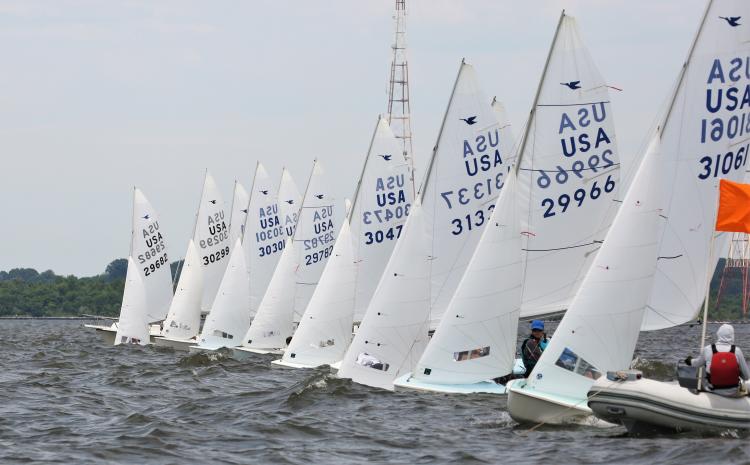Learning the New Racing Rules of Sailing
Every year is a great year to include “refresh my memory of the Racing Rules of Sailing” on your list of New Year’s resolutions. But in 2021, it’s extra important. That’s because every four years World Sailing revises and republishes the Racing Rules of Sailing (RRS). As racing and boats evolve, new situations arise that the rules folks want to cover. And they continually strive to make the rules as clean as possible, but sometimes changes create more questions than answers. Let’s give a great big welcome to the RRS for 2021-2024!
While most of the revisions that will go into effect on January 1 are ultra-fine-tune changes that respond to very limited, often procedural, situations, some of them are more likely to affect your actual racing or regatta experience. Here’s a quick rundown of relevant changes.
Don’t bother easing the spinnaker guy at a downwind finish. Your start and finish now happen when your hull crosses the start or finish line. Previously, it was any part of your hull, crew, or equipment. So, at the start, it’s okay if your accidentally deployed bowsprit is over the line, or if you’re reaching and your crew out on a trapeze is over the line, as long as your hull is not on the course side of the line. Now, in a big fleet on a long line, do I want to tempt the race committee into mistakenly calling me over? No thanks; I’ll play it a little conservatively. Some fleets will need to do some work to help race officials define what “hull” refers to. For example, the wings on a 49er, are they “hull” or “appendage”?
Yet another reason to check the scores at the end of the day. It’s always good practice to make sure the scores posted match your recollection of what happened on the water. Now, there’s another reason. In past years, if a boat had potentially not correctly sailed the course (for missing a mark or similar), another boat or the race committee would have had to protest that boat for that violation. Starting this month, if a race committee notices a boat not sailing the course properly, they can score a boat “NSC” without having to protest that boat under rule 28. If you feel you have been incorrectly scored NSC, you will need to file for redress.
Know your flags. For the finish line, a solid blue flag is now an option to be one end of the finish line. Be sure to read the Sailing Instructions for each event to be sure you know what to look for at both the start and the finish. Another important flag: The “V” flag (white background with red “X”). When the race committee displays the V flag with one sound, all boats—and race officials and support boats (for coaches and parents on the water)—should listen to the race committee for how they can help respond to any search and rescue instructions.
These are not the only rule changes, but they are the ones that could have an immediate or dramatic effect on your time on the water. Additional changes tweak how boats are exonerated for breaking rules when another boat made them break that rule (hint: automatically!), fine-tune changes to the changing-course rule related to starboard-tack boats hunting port-tack boats (now described as “on a beat to windward” rather than “after the starting signal”), and closing a loophole in rule 18 (still: don’t be a jerk; don’t stuff it in there).
For more on these, and to review the rest of the rules, there are a ton of resources to access. If you can’t wait to read the rules, they are available from World Sailing at sailing.org/documents/racingrules. US Sailing’s RRS app will be available soon and will include not only a searchable set of the rules, but a way to submit a protest form or request for redress via the app and a “whiteboard” to help you draw your protest diagrams.
There are lots of ways to learn more about the rules and how to understand them, including the go-to “Dave Perry’s Racing Rules of Sailing through 2024” (available through ussailing.org). We’ve all gotten a ton better on webinars and Zoom meetings, too, so keep your eyes open for internet-based opportunities for rules workshops!
By Kim Couranz





